The Vsmart Live is a mid-range device built primarily for the Vietnamese market. It comes with a 6.2-inch AMOLED display with FHD+ resolution and on-screen fingerprint-reader, and a 20MP front camera. A Qualcomm Snapdragon 675 chipset and up to 6GB of RAM powers Google’s Android 9 mobile OS.
The main camera on the rear of the device features three individual modules: a 48MP primary wide-angle that produces 12MP output files; an 8MP ultra-wide; and a 5MP sensor that is predominantly used for depth estimation in portrait modes. There’s also an LED flash, and the camera is capable of shooting 4K video at 30 frames per second.
Key camera specifications:
- Triple-camera setup
- Primary: 48MP 1/2.25″ sensor, 25mm-equivalent f/1.7-aperture lens, PDAF
- Ultra-wide: 8MP 1/3.6″ sensor, 14.4mm-equivalent f/2.2-aperture lens, AF
- Depth estimation: 5MP 1/5″ sensor
- LED flash
- 4K video, 2160p/30fps
About DXOMARK Camera tests: For scoring and analysis in our smartphone camera reviews, DXOMARK engineers capture and evaluate over 1600 test images and more than 2 hours of video both in controlled lab environments and in natural indoor and outdoor scenes, using the camera’s default settings. This article is designed to highlight the most important results of our testing. For more information about the DXOMARK Camera test protocol, click here. More details on how we score smartphone cameras are available here.
Test summary


With a DXOMARK Camera overall score of 87, the Vsmart Live occupies a position in the bottom third of our ranking, performing on a similar level as other affordable mid-rangers—for example, the Motorola One Zoom, or older flagships, like the Apple iPhone 7 Plus.
The Vsmarts Photo score of 87 points is also quite average and nowhere near the best in class, nor even the best devices in its price bracket. The camera is capable of capturing appealing images in good conditions, but there is quite some room for improvement in almost all areas. Exposure can be problematic, with frequent overexposures in bright conditions and a lack of dynamic range that results in highlight clipping. The autofocus isn’t always reliable, with some failures in our real-life tests and slow performance in our lab tests. Performance in our Night test was generally pretty poor and our testers found a range of image artifacts, including strong ringing.
This said, color rendering can be nice and the level of captured detail is fairly good in bright light. Noise is visible in pretty much all light conditions, though, and the zoom controls are best left alone. The lack of a dedicated zoom camera means that the Vsmart’s zoom images show low levels of detail, strong noise, and many artifacts, especially at longer zoom distances.
The camera’s ultra-wide angle camera offers quite a wide angle of view at approximately 15mm, but ultra-wide images show noise, fringing, and other artifacts. Bokeh shots in portrait mode look OK when viewed on the device’s display, but under closer inspection reveal some strong depth estimation artifacts around foreground subjects.
The Vsmart’s performance in video mode is somewhat worse than for stills, resulting in a fairly low Video score of 78. Video footage suffers from overexposure and a lack of dynamic range, autofocus instabilities, low levels of detail, noise, artifacts, and other imperfections. As with stills, color is pretty decent, though, with generally good color rendering and only some orange color casts under tungsten light. Lack of stabilization is another problem, however, which means you better try and keep the camera as still as possible during recording to avoid shaky video clips. Overall, there are better alternatives for mobile video shooters.
Photo scores explained
The Vsmart Live achieves a Photo score of 92 points, placing it in the bottom half of our database. The Photo score is calculated from sub-scores in tests that examine different aspects of a device’s performance for still images under different lighting conditions. In this section, we take a closer look at how these sub-scores were determined and compare image quality against some key competitors.

Exposure and Contrast
Vsmart Live
82
The Vsmart is capable of producing decent exposures in the right conditions, but our testers also observed several problems that can lead to suboptimal image results. As you can see in the sample below, dynamic range is limited, and when shot in high-contrast conditions, images often show strong highlight clipping. This is exacerbated by the Vsmart’s tendency to slightly overexpose in bright light. In low light, images are usable down to 5 lux, but are noticeably underexposed in less light.

Color
Vsmart Live
82
Like for Exposure, the Vsmart achieves only an average score for Color. Outdoor color rendering and white balance are generally accurate, but our testers did see orange color casts when shooting in indoor conditions. Color shading is noticeable in pretty much all test conditions.

Autofocus
Vsmart Live
82
The Vsmart Live’s autofocus system lags slightly behind the best in class. It works accurately in our lab tests, but is noticeably slower than some competitors. In the graph below, you can see that the Vsmart Live camera locked on consistently with both short and long delays after defocusing the camera, but was slower to do so than the Lenovo Z6 Pro.
In real-life shooting, our testers also observed some autofocus failures, mainly under typical indoor conditions and in low light.

Noise
Vsmart Live
66
The Vsmart Live records fairly good detail in bright outdoor conditions, especially for edge detail, but a lack of detail becomes visible under indoor lighting and in low light. There’s also room for improvement in terms of controlling image noise. In outdoor images, luminance noise is often visible in blue skies. And some chroma noise can be visible in the shadow areas of the frame.
Noise becomes more intrusive in indoor images and low light, as you can see in the indoor samples below. You can also see how the device’s noise reduction algorithm blurs the fine detail in the pattern of the sofa.

Artifacts
Vsmart Live
61
With a wide range of image artifacts visible in our Vsmart Live sample images, the test device scores fairly low in this category. We deducted the most points for ringing, which tends to be most noticeable along high-contrast edges in the frame; and for lens flare, which mostly occurs with a strong light source inside or just outside of the frame.
Other artifacts our testers found include softness towards the edges of the frame, noisy edges, color fringing, and a shift towards cyan close to clipped areas in blue skies.

Zoom
Vsmart Live
23
The Vsmart Live does not feature a dedicated tele-camera and therefore unsurprisingly does not do too well in the Zoom category. Detail is still acceptable using close-range zoom, but decreases with the zoom factor, and overall resolution is poor. Zoom images also show strong noise and a range of artifacts, including aliasing, maze patterns, and strong ringing.
Like the Vsmart, the Galaxy A50 does not offer a tele-lens. In the samples below, you can see that when zooming, the Vsmart device is capable of squeezing a little more detail out of the scene while controlling noise slightly better than the Samsung.

Bokeh
Vsmart Live
50
Like for many devices in its price bracket, bokeh simulation images taken in portrait mode look acceptable when viewed on the device display. However, magnifying the image reveals fairly obvious segmentation errors, generally poor depth estimation, and an unnatural bokeh shape. On the plus side, spotlights in the background are rendered nicely, with good contrast.

Wide
Vsmart Live
27
The Vsmart Live’s ultra-wide-angle module offers a nominal equivalent focal length of 14mm, but measured closer to 15mm in our tests. Nonetheless, it is among the wider offerings in its price bracket. Ultra-wide images show fairly good exposure and generally accurate white balance, but the level of captured detail is low and noise is visible in all conditions. Images usually also display artifacts—for example, fringing.

Night
Vsmart Live
38
The Vsmart’s performance under our Night test protocol is below average, even when compared to rivals in its class. Flash-on images show a range of issues—for example, pink color casts, color shading, red-eye effect, and strong noise on subjects’ faces.
When shooting in flash-auto mode, the flash often does not trigger for portraits, resulting in strong underexposure of subjects. Landscape shots can be noticeably underexposed as well, and levels of detail tend to be low, with noticeable image noise.
Users can achieve better exposures for landscapes with the flash forced off, although very dark scenes are still underexposed. A lack of dynamic range also results in highlight clipping in night cityscapes, and the detail/noise trade-off is not any better than for flash-auto shots. The Vsmart Live comes with a dedicated Night mode, but image results are not good enough to earn any extra points.
Video scores explained
The Vsmart Live scores 78 points for its video performance, putting it into the bottom third of our ranking for this category. The overall Video score is derived from performance and results across a range of attributes in the same way as the Photo score: Exposure (76), Color (88), Autofocus (70), Texture (46), Noise (77), Artifacts (70), and Stabilization (55)
Overall, the Vsmart Live’s performance in video mode leaves quite some room for improvement, making the device more suited for users who tend to focus on still image capture. The Exposure low score of 76 is due to a lack of dynamic range, resulting in frequent highlight clipping in high-contrast conditions. Video footage also often shows overexposure in bright outdoor conditions and under typical indoor lighting. This problem does not occur in low light, but in very low light levels (under 5 lux), video clips tend to be underexposed.
Color is one of the bright points, thanks to generally good color rendering and mostly accurate white balance. Only under tungsten lighting did our testers observe a strong orange/yellowish color cast. On the downside, autofocus performance is quite poor, with many instabilities, poor tracking, and constant overshooting when refocusing—all of which make recording usable footage a challenge.
In addition, the level of recorded detail is low in all light conditions. Noise is well under control in bright outdoor conditions, but some temporal noise is visible when recording under indoor lighting, and it becomes quite intrusive in low light. The Vsmart’s video clips also suffer from a range of artifacts, including ringing, aliasing, moiré, and hue shifts. To top things off, the device does not offer any video stabilization, which means any camera shake or walking motion will be noticeable in your video clips. (Predictably, this results in a very low score for Stabilization.)
Conclusion
In photo mode, the Vsmart Live is capable of capturing nice pictures with pleasant colors in the right conditions, but there’s room for improvement in pretty much all areas. Exposure is often too bright, the autofocus isn’t the most reliable, and the Vsmart can generally not be recommended for low-light shooting. The ultra-wide camera is useful when you need to squeeze in more of the scene, but the lack of a dedicated tele-camera means that you should reserve using the zoom only for emergencies.
While still images are often acceptable, video performance is pretty poor across most test categories. Especially frequent autofocus instabilities and a lack of stabilization mean that the Vsmart Live is not the device of choice for users who shoot a lot of video clips. With many similarly-priced alternatives in the mid-range segment, it is difficult to recommend the Vsmart Live based on its camera performance.
Photo
Pros
- Good detail in bright light
- Accurate autofocus in bright conditions
- Accurate white balance in most conditions
- Natural spotlight rendering with good contrast in bokeh mode and good light
Cons
- Frequent overexposure in bright light
- Limited dynamic range in most conditions
- Color shading in all conditions
- Unnatural details and artifacts in zoom pictures
- Pink cast in flash shots
- Soft edges, color fringing, and noise in ultra-wide shots
Video
Pros
- Well-controlled noise in indoor and low-light conditions
- Accurate white balance in bright light
- Fast autofocus
Cons
- Stabilization instabilities in outdoor conditions
- Frequent overexposure in bright light and under indoor conditions
- Autofocus instabilities in all conditions
- Lack of fine detail
- Ringing in bright light


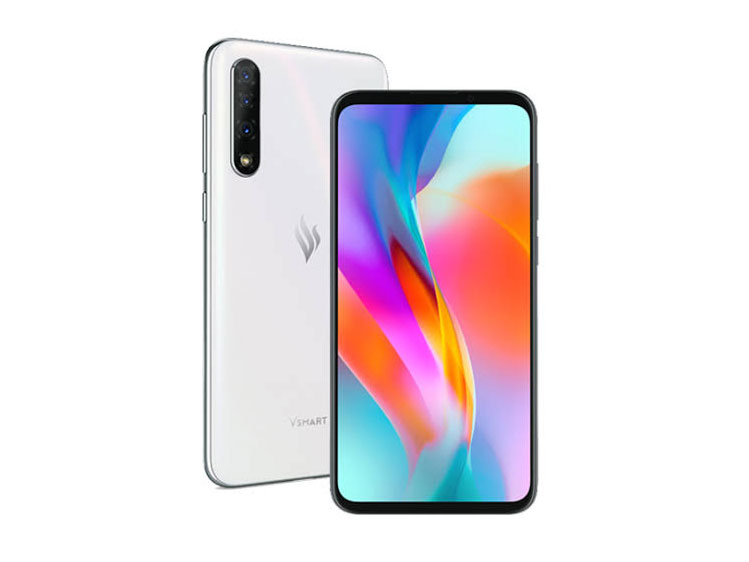




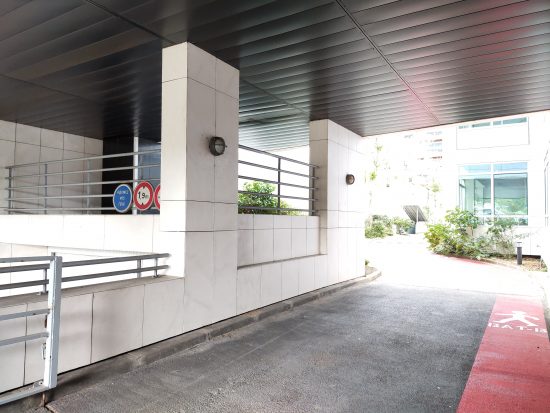
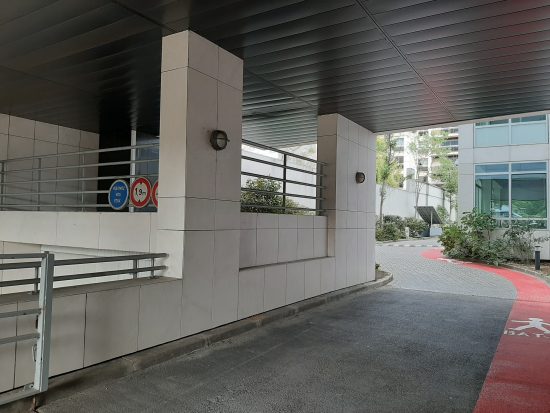
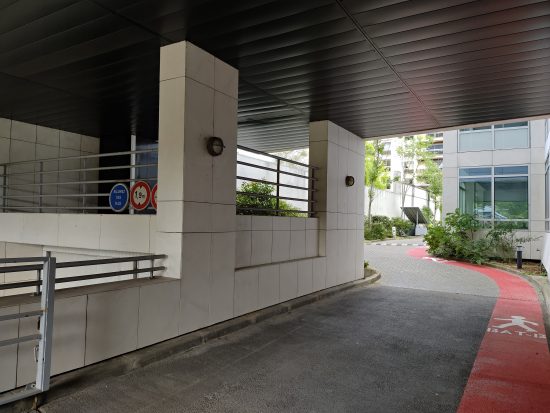




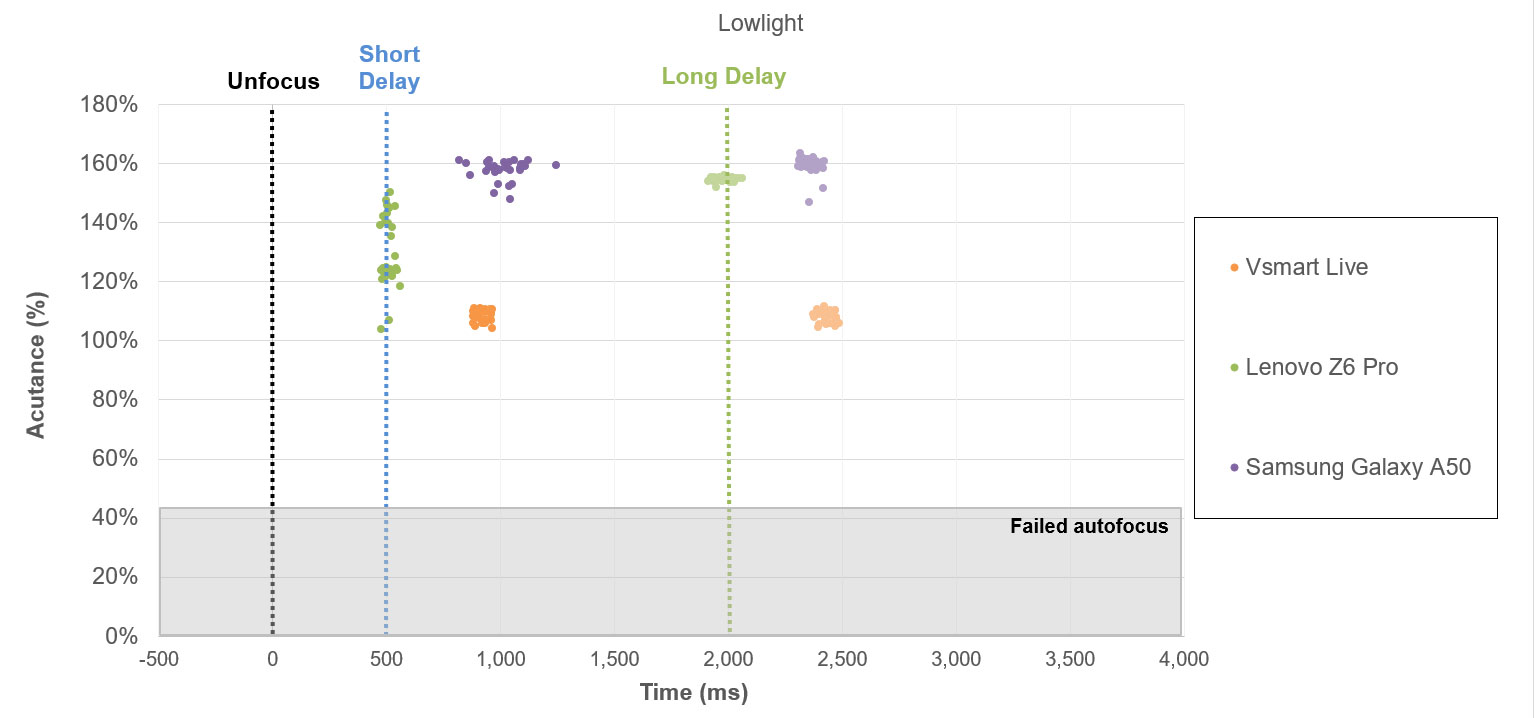








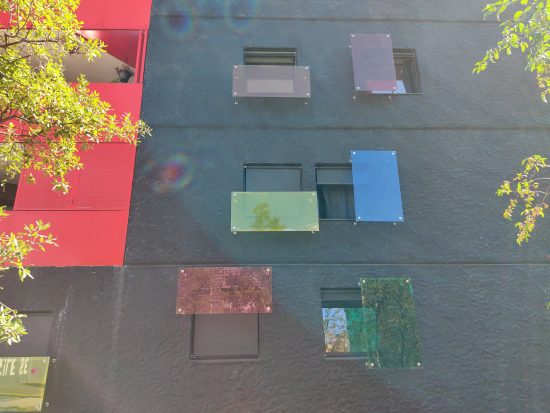














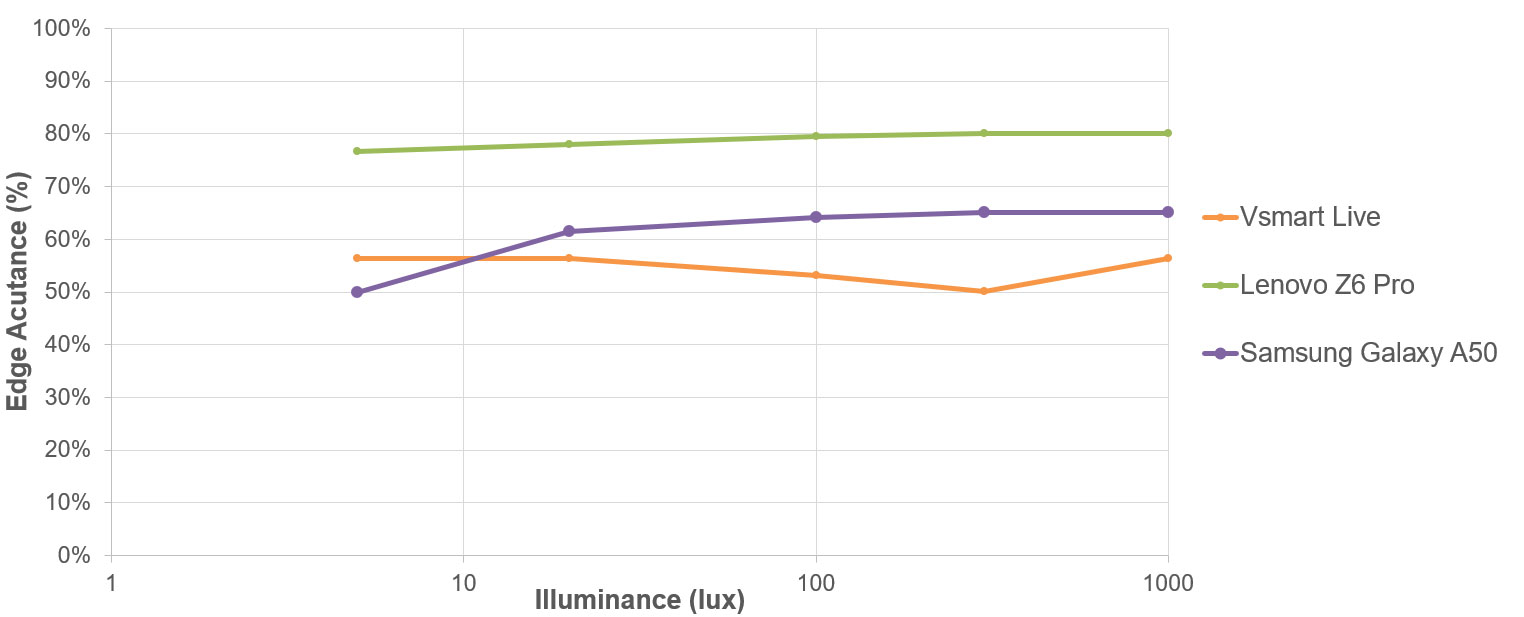
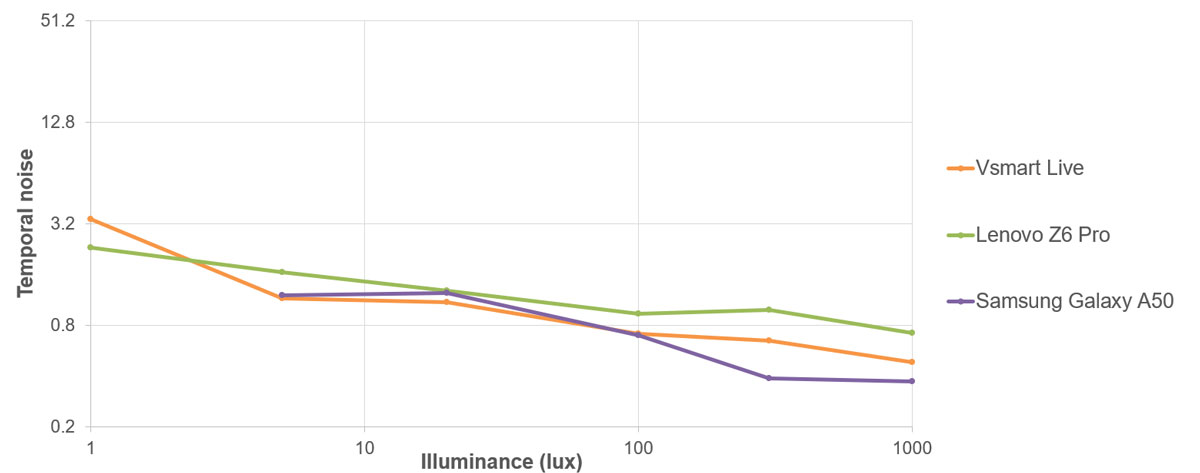
DXOMARK encourages its readers to share comments on the articles. To read or post comments, Disqus cookies are required. Change your Cookies Preferences and read more about our Comment Policy.